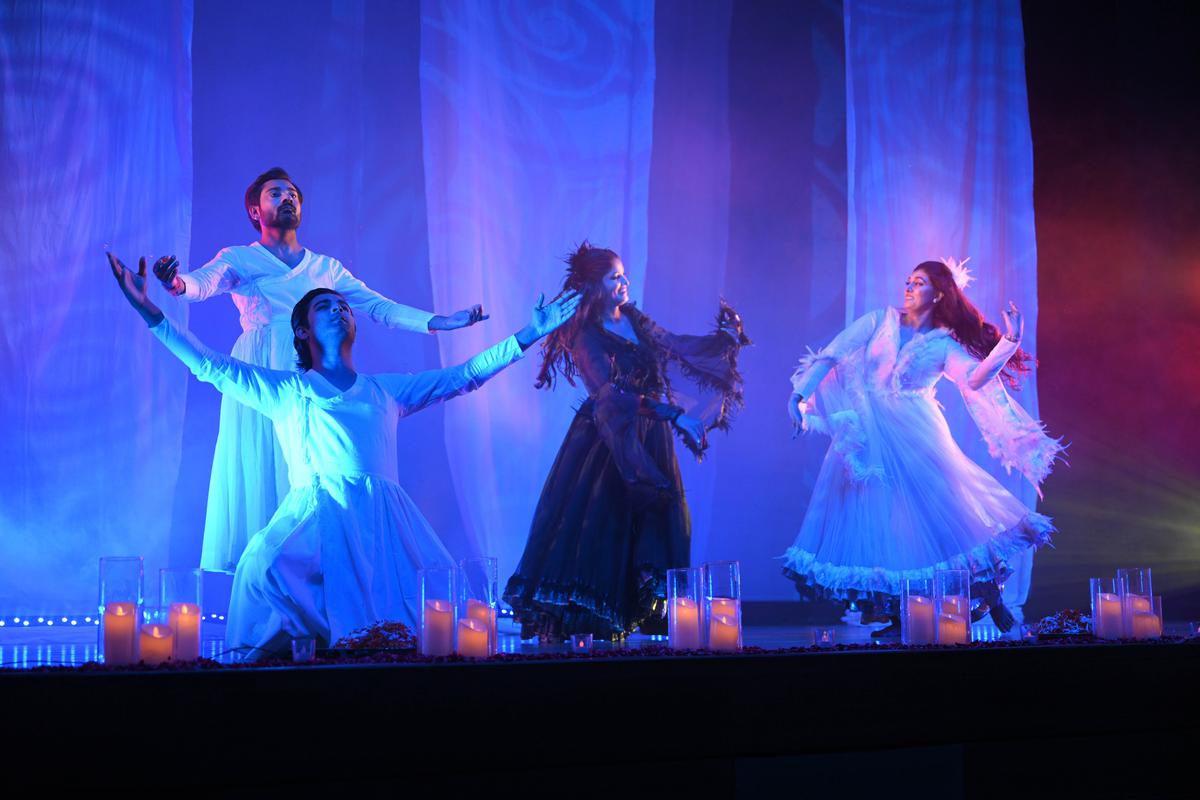
From ‘Huma’
| Photo Credit: Special Arrangement
‘Huma’ is an Arabic folklore about the celestial bird with wish-fulfilling powers. ’ It took the audience through the trajectory of failure and success, sorrow and joy while reinventing itself. Scripted, designed, and directed by the sensitive poet and filmmaker Muzaffar Ali, the musical (produced by wife Meera Ali), was presented recently by the Delhi chapter of the Federation of Indian Chamber of Commerce and Industry’s Ladies Organisation at the Lotus Temple in New Delhi.
A firm believer and promoter of the intangible cultural heritage of Awadh, Muzaffar Ali had conceived the ballet in a way that it brought alive the essence of the precious inheritance through poetry, music, dance, costumes, and stage decor. The tastefully designed Awadhi traditional costumes by Meera Ali from the House of Kotwara and the Kathak-based choreography by Shinjini Kulkarni, the granddaughter of Pt. Birju Maharaj, added sophistication and delicate nuances to the fascinating show.
The Urdu couplet “Huma ek parinda-e-khwaab hai, jo na dikhaai de, na sunaai de…”, written and recited by Muzaffar Ali, provided a perfect literary and musical background to the opening sequence with Huma draped in a delicate white costume performing a duet with its shadow to the qawwali ‘Naqsh-o-nigaah, parda-o-dar dekhte rahe / Kya dekhte hum unko magar dekhte rahe’; incorporating the thaat, aamad, paran-aamad and more. The graceful Shinjini as Huma and her shadow (Neha Mishra) also indulged in an sawaal-jawaab.

‘Huma’ is based on the legendary bird
| Photo Credit:
Special Arrangement
The storyline defining eternal love, based on sequences of meeting, separation, and the final union, imaginatively used Urdu lyrics such as ‘Dhadakte dil ka naazuk sa fasana…’ and Awadhi folk songs like ‘Oh re more pardesi balamuva, kaise kate din-raat/Nis-din tadpat bitat raina, tum bin kachhu na suhaat’ set to the lilting Chaanchar Theka of Deepchandi Taal, where the concluding Kaherwa Laggi was matched with crisp footwork. These were soulfully sung by the traditional qawwals Shahid Niyazi and group from Rampur. Shinjini and Neha along with the three male dancers (Mayukh Bhattacharya, Hitesh Gangani, and Mohit Shridhar) carried the storyline with the desired finesse.
Huma climaxed with the ‘Rang’ composed by Amir Khusro ‘Aaj rang hai ri maan rang hai ri,’ culminating into the verse ‘Khosro rain suhaag ki, main jaagi piyu ke sang/Tan mora rang piyu ka so dou bhaye ek rang’. When, in the words of Muzaffar Ali, ‘Pairon ki thaap aur dil ki dhadkan ek ho gayen’ (when the sound of the ghunghroos and heartbeats of the audience became one) Summing it all up he further explained, “Huma is the story of the bird and its shadow symbolises the human soul and its false ego. When it becomes free, bereft of the ego, the soul merges with the divine.”
For all the latest Entertainment News Click Here
For the latest news and updates, follow us on Google News.
